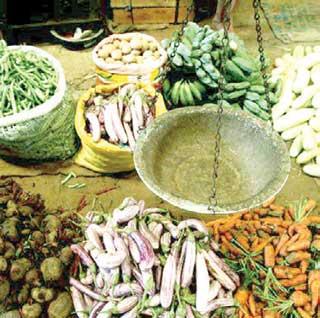22 Jun 2021 - {{hitsCtrl.values.hits}}
Sri Lanka’s national consumer prices in May 2021 rose at the highest level since September 2020, as the food prices skyrocketed due to the supply chain bottlenecks caused by the lockdowns, eroding people’s purchasing power and making them poorer.
 The consumer prices measured by the National Consumer Price Index (NCPI) for all goods and services rose by 6.1 percent in the 12 months to May 2021, accelerating from 5.5 percent in April, as the soaring food prices pushed the overall prices up to the point that the daily income earners struggled to make their ends meet, due to the business and job-crippling lockdowns imposed by the virus-controlling bureaucrats.
The consumer prices measured by the National Consumer Price Index (NCPI) for all goods and services rose by 6.1 percent in the 12 months to May 2021, accelerating from 5.5 percent in April, as the soaring food prices pushed the overall prices up to the point that the daily income earners struggled to make their ends meet, due to the business and job-crippling lockdowns imposed by the virus-controlling bureaucrats.
The food inflation taken separately jumped 10.3 percent during the year to May 2021, from 9.7 percent in April, rising for the fourth consecutive month on record. The prices of food rose by 1.7 percent from April, compared to an increase of 0.1 percent recorded between March and April, reflecting how fast the food prices in Sri Lanka are advancing beyond the reach of the common man.
Making the matters worse, Sri Lanka’s virus-controlling bureaucrats reimposed draconian lockdowns and other restrictions such as stay-at-home orders on people since April 23, depriving more than 4.5 million daily income earners from making a living.
Daily income earners consist of over 55 percent of the total labour force in Sri Lanka, while the government is already cash-strapped to pay the state sector salaries and other bills.
The prices of most food items such as coconut oil, rice, fresh fish, coconuts, dhal, potatoes, dried fish, green gram, big onions, red onions, almost all varieties of vegetables, sugar and turmeric powder, which formed the NCPI basket, rose during May from a month ago, making the lives harder and painful for the people living in Sri Lanka.
A few food items such as green chillies, chicken, fresh fruits and eggs recorded declines in prices, according to the Census and Statistics Department survey data.
The department said it collected prices in the fourth week of May from “door-to-door mobile service and home delivery services etc.”, as the near full lockdowns were imposed from May 21 onwards, forcing the people to pay more for their essentials, including for additional delivery charges.
Meanwhile, the non-food prices rose by 2.5 percent in the 12 months to May 2021, accelerating from 2.2 percent in April, as all subcategories under non-food rose.
Payments made in respect of healthcare services rose the most during May, due to private hospital room bills and the payments to medical laboratory tests.
Although the sub-categories of clothing, education and transport were missing in the basket of services during May, due to the near absence of such activities due to lockdowns, the upward price revision in fuel prices could stoke higher inflation in both food and non-food prices in June, as fuel has a cascading effect on almost every other commodity.
Meanwhile, the so-called core prices measured barring the most volatile items such as food, energy and transport, rose by 4.2 percent during the 12 months to May 2021, up from 4.1 percent in April.
19 Nov 2024 19 minute ago
19 Nov 2024 3 hours ago
18 Nov 2024 18 Nov 2024
18 Nov 2024 18 Nov 2024
18 Nov 2024 18 Nov 2024